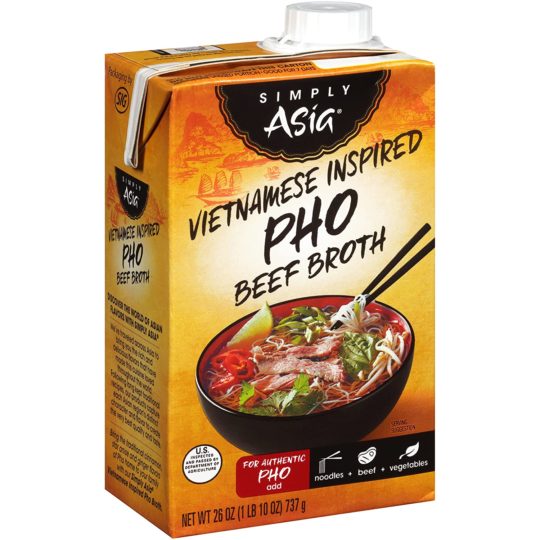Updated on April 9th, 2023
While most people love the random glass of red wine and the heady feeling that drinking it may elicit, they might not be aware that this classic beverage can also be a master ingredient in the kitchen, employed commonly to unleash all the flavors of other ingredients in recipes. Red wine has been discovered for a while now to work its way into several recipes and improve their taste by emphasizing their flavors in incredible ways.
If you want your sauces, soups, and especially your beef stow to have a hint of extra flavors and taste infinitely better, then red wine can be a great thing to have on hand. What happens, however, if you’re out of red wine and crave its effects in your recipes?
There are some substitutes you could try in place of red wine in your beef stew. These substitutes effectively replicate the effects of red wine in recipes, making them much more enjoyable. It is also important to find the right amounts and methods when introducing these substitutes into your recipes to ensure the best results.
What is Red Wine?
Red wine is a type of wine created from grapes with a dark color. The color of the wine can range from deep violet, which indicates young wines, to brick red, which is representative of mature wines, and brown, which is typical of older red wines. All around the world, red wine is considered a delicacy.
The crimson hue of most purple grape juice comes from anthocyanins contained in the grape’s skin. Exceptions to this are the relatively rare teinturier types, which yield a red-colored juice. The extraction of color and flavor components from the grape skin generally accounts for a large part of the red-wine production process.
The purpose of red wine in cooking is to increase, enhance, and emphasize the flavors and aromas of meals — not to mask but rather to fortify the flavor of the recipes to which it is added. While the meal is cooking, the alcohol in the wine evaporates, leaving only the flavor. Many recipes include red wine in their cooking process and benefit from its added flavors, including sweet soups, stews, sauces, and desserts.
Red Wine Nutrition Facts

Uses of Red Wine in Recipes
Apart from being coveted as an exquisite and pleasant-tasting drink, red wine is also very useful in many cooking procedures. The alcohol content of red wine aids in the dissolution of fats and helps release flavor molecules in dishes, allowing other ingredients to show their distinct flavors in ways that other liquids (such as water or broth) or fats (such as butter and olive oil) cannot. Wine in marinade also helps tenderize beef, making beef stews so much more enjoyable. Due to this characteristic quality that wine possesses, it produces fantastic results in some recipes. Some of them are listed below:
- Coq au vin
- Lasagne
- Red wine marinade
- Pan-seared steak with red wine sauce
- Red wine-braised short ribs
- Beef wellington with red wine sauce
- Sauteed chorizo with red wine
- Red wine onion gravy
- Lamb, red wine, and rosemary casserole
- Grilled lamb chops with red wine sauce
- Red wine marinated London broil
- Spaghetti bolognese
- Beef casserole
- Beef stroganoff
- Filet mignon with red wine sauce
Substitutes for Red Wine in Beef Stew
While we may sometimes crave a good glass of Sauvignon with a filling, home-cooked beef stew, we also understand that red wine can be used for various purposes inside the stew, rather than as a drink beside it. The ability to add acidity to any dish, which heightens other flavors, is one of the key reasons many people love to cook with red wine.
If, however, there is no red wine on hand for use in your beef stew, there are some substitute options to explore with. The substitute choice should be made with the effects of red wine you want to replicate in mind. Naturally, it would help if you chose the option to produce similar results. Some of them are described below:
Broth
Many stews already have a certain amount of broth to complement the red wine, and this implies that replacing the red wine with even more broth will not add any extra flavors that may or may not fit the flavor profile of the broth.
Broth can be made at home with bones and scraps or purchased in a store. The concentrated liquid sachets are the best form of broth to buy, as they offer the most excellent and most authentic flavor, elevating your beef stews to better tastes.
Red wine can be replaced with equal amounts of beef broth. Because broth is not as acidic as red wine, you’ll need to add vinegar or lemon juice to tenderize the meat and imitate the flavor of red wine as closely as possible. Fill the measuring cup halfway with broth, and add one tablespoon of vinegar or lemon juice.
Tomato Paste
Tomatoes are a versatile component that may be used in various stews, and tomatoes are already included in most beef stews. Using tomato paste in stews adds color, acidity, and sweetness by adding a spoon or two of sugar.
Tomato juice can also be used in this instance if tomato paste is not available. Ideally, the tomato juice should be substituted in the same amounts you usually use for red wine. Sugar can also be added to improve the flavor of the stew.
When using tomato paste in beef stews, continue the cooking process, usually after adding one to two teaspoons of tomato paste and one tin of diced tomatoes. If the stew is too tart, add some sugar, one spoonful at a time, until the flavor is right.
Red Grape Juice
If you prefer sweeter-tasting beef stews, red grape juice is a fantastic option to replace red wine. It has a comparable grape flavor to red wine, and it provides a similar deep crimson hue, making the beef stew deliciously red. What’s more, red grapes are healthier than most substitutes, which is an added advantage.
You can use equal amounts of wine and juice to replace red wine. If the juice is excessively sweet after it has been added to the stew, add one tablespoon of red or white wine vinegar at a time to balance out the excessive sweet taste.
It is advised to use unsweetened red grape juice to produce a superior flavor and less sugar.
Liquid from Canned Mushrooms
This may seem unusual and far-fetched, but the brine from canned mushrooms has a flavor profile similar to red wine. Both are sour and vinegary, with a hint of sweetness. There are also identifiable mushroom notes, but they have a woody character akin to red wines.
One other advantage of using canned mushrooms is that the mushrooms themselves can be added to the dish. Stews are adaptable, so adding the mushrooms will only enhance the dish’s flavors.
When substituting canned mushroom brine for red wine in beef stews, use the juice (and the mushrooms) from one tin of mushrooms for every half cup of red wine you usually use in your beef stew.
Frequently Asked Questions (FAQs)
Can you use red wine vinegar instead of red wine in the stew?
If the recipe calls for less than 1/4 cup red wine, you can safely use red wine vinegar instead. However, the outcome will be different. Instead of the mellow, rich flavor of roast beef simmered with red wine, the roast will have an unpleasant vinegary flavor.
Can I replace red wine with white wine in beef stew?
Because all wines react chemically in the same manner, there’s no risk of a recipe failing if you use white wine instead of red wine or vice versa.
What is a good wine for beef stew?
Pinot Noir, Merlot, or Cabernet Sauvignon are the best dry red wines for beef stew or a wine-based sauce. It’s worth noting that fruitier wines will get fruitier as they reduce, and this works well in sauces that need a little sweetness, such as those combined with mushrooms.
Conclusion
If you think the taste of beef stew is fantastic, wait till you try adding some red wine to it. Red wine has a knack for accentuating flavors in any recipe, and the alcohol content mixes well with other ingredients to create a satisfying meal.
If you don’t have any red wine to use in your beef stew, try exploring one of our suggested substitutes. They mimic the enhancing quality of red wine, and some of them will bring out whole new flavors that might prove too good to be true.





